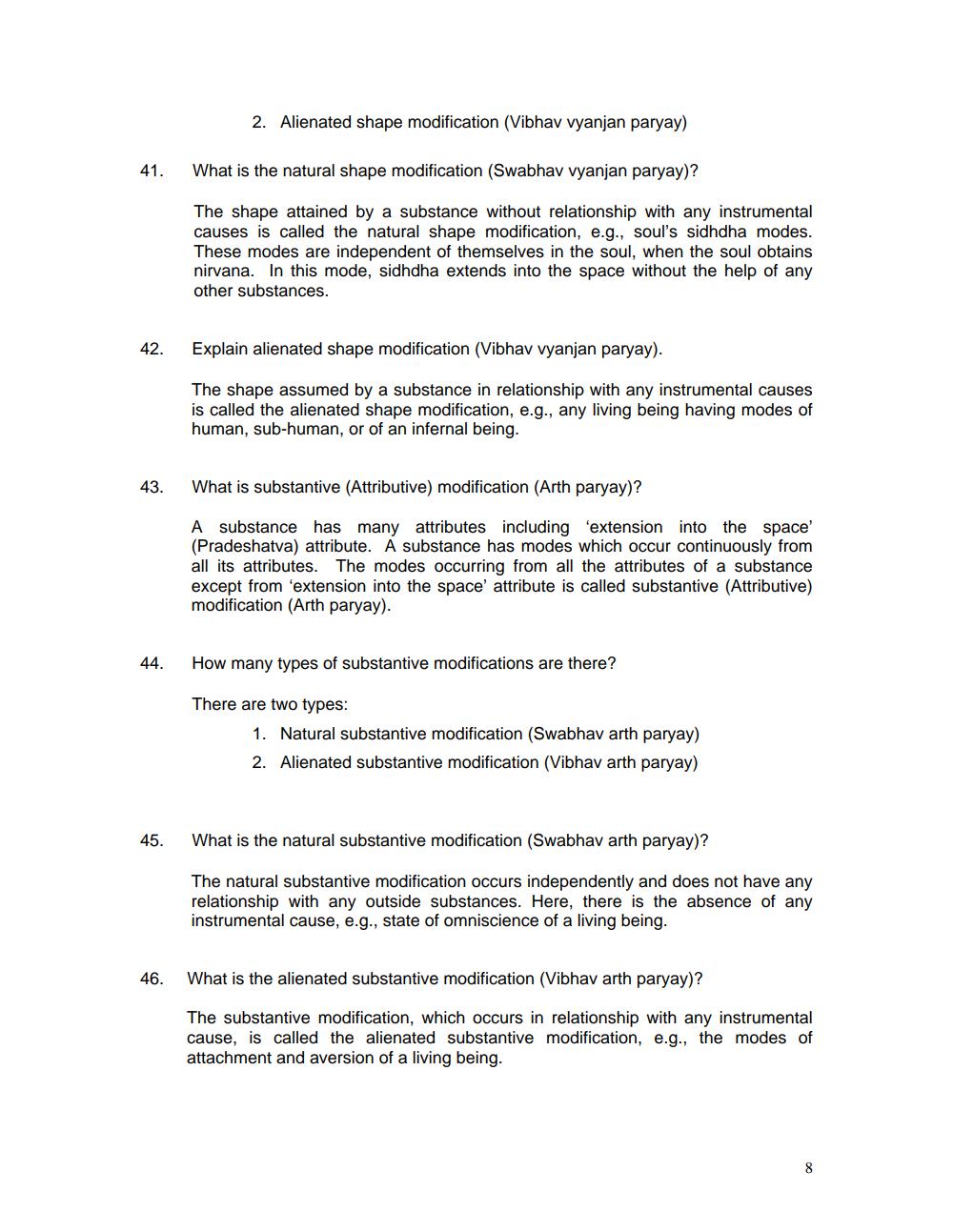________________
2. Alienated shape modification (Vibhav vyanjan paryay)
41.
What is the natural shape modification (Swabhav vyanjan paryay)?
The shape attained by a substance without relationship with any instrumental causes is called the natural shape modification, e.g., soul's sidhdha modes. These modes are independent of themselves in the soul, when the soul obtains nirvana. In this mode, sidhdha extends into the space without the help of any other substances.
42.
Explain alienated shape modification (Vibhav vyanjan paryay).
The shape assumed by a substance in relationship with any instrumental causes is called the alienated shape modification, e.g., any living being having modes of human, sub-human, or of an infernal being.
43.
What is substantive (Attributive) modification (Arth paryay)?
A substance has many attributes including 'extension into the space' (Pradeshatva) attribute. A substance has modes which occur continuously from all its attributes. The modes occurring from all the attributes of a substance except from 'extension into the space' attribute is called substantive (Attributive) modification (Arth paryay).
44.
How many types of substantive modifications are there?
There are two types:
1. Natural substantive modification (Swabhav arth paryay) 2. Alienated substantive modification (Vibhav arth paryay)
45.
What is the natural substantive modification (Swabhav arth paryay)?
The natural substantive modification occurs independently and does not have any relationship with any outside substances. Here, there is the absence of any instrumental cause, e.g., state of omniscience of a living being.
46.
What is the alienated substantive modification (Vibhav arth paryay)?
The substantive modification, which occurs in relationship with any instrumental cause, is called the alienated substantive modification, e.g., the modes of attachment and aversion of a living being.




